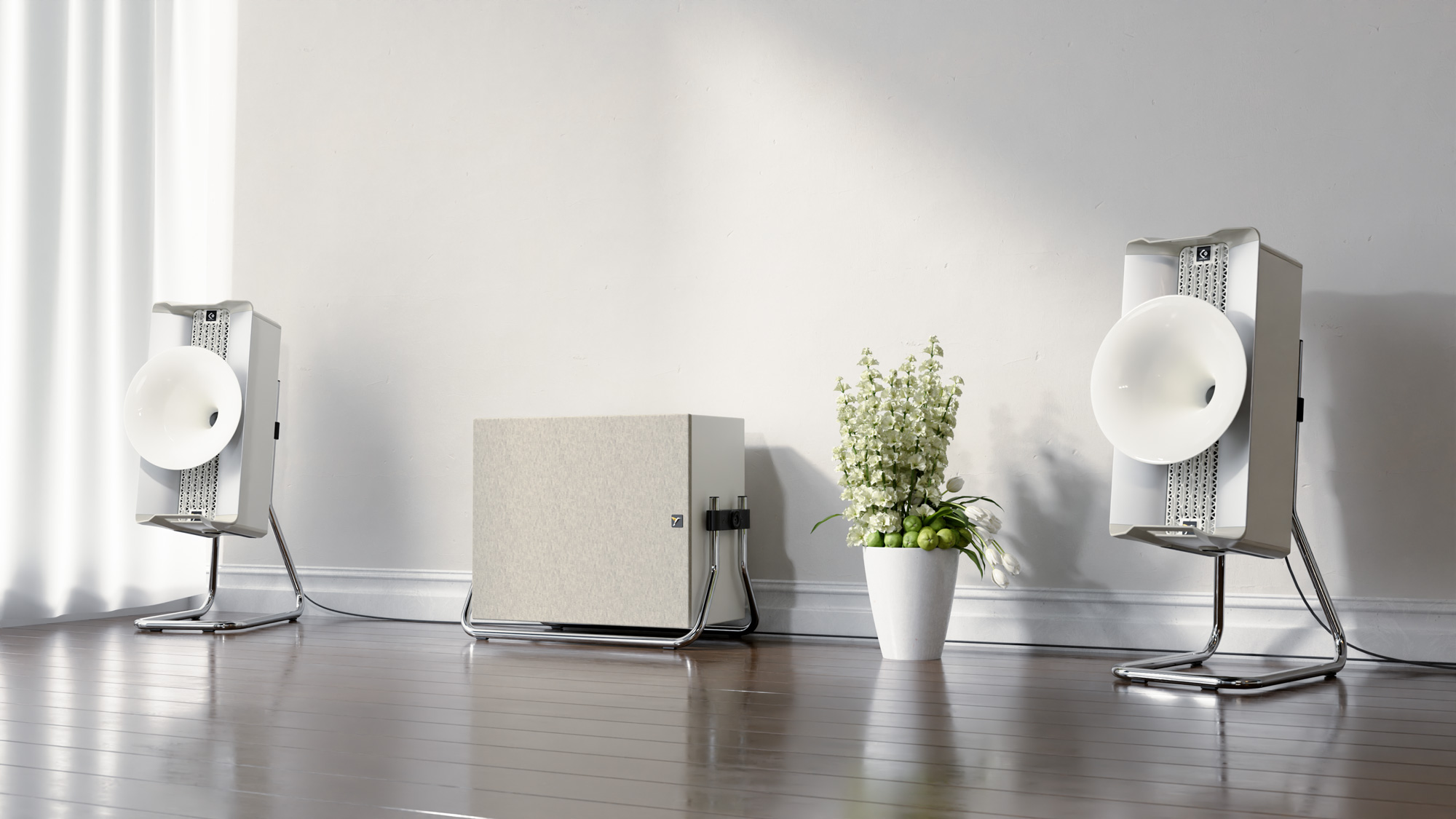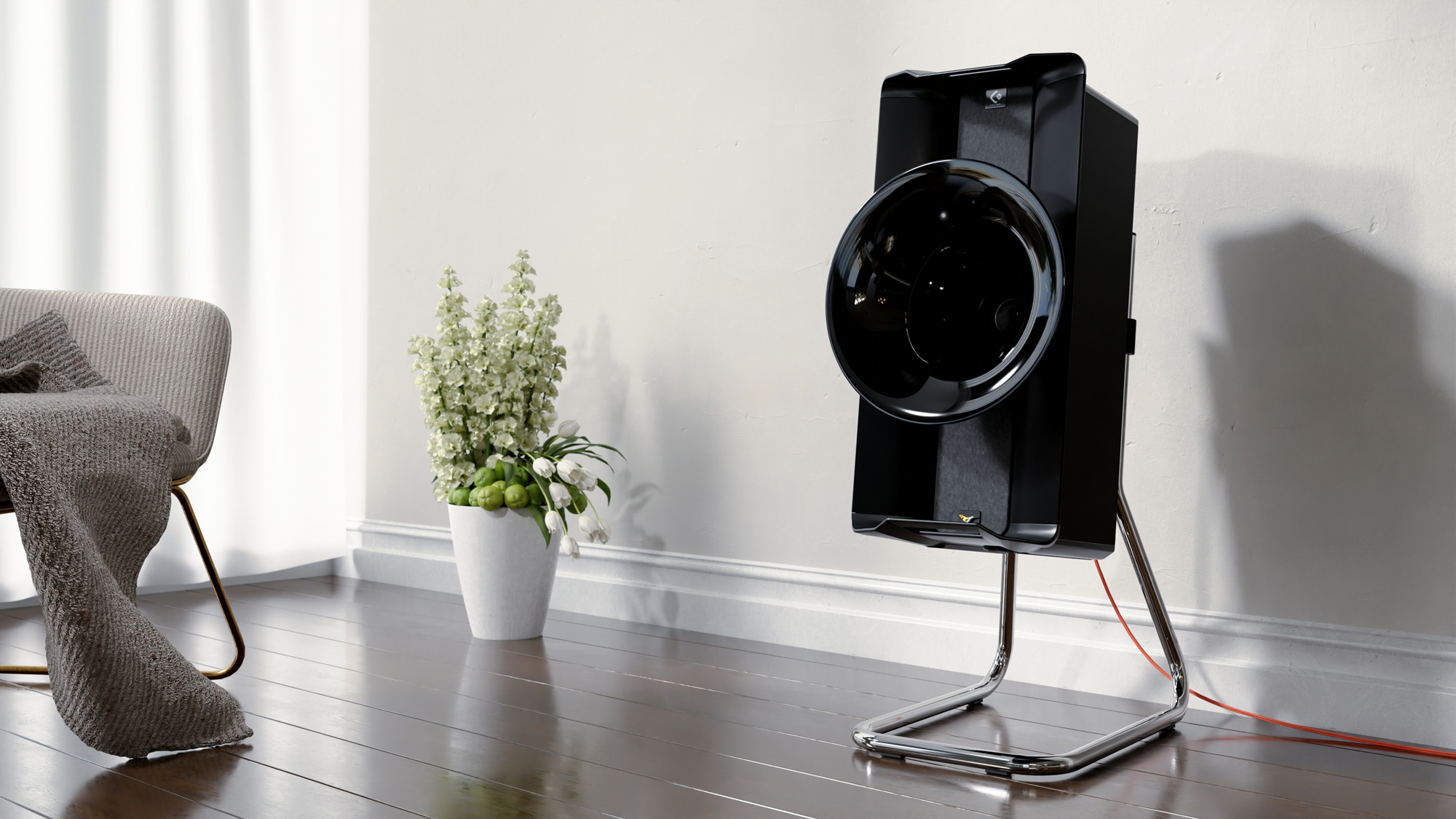Technical description of Colibri’s sound
Read the description of the speaker on the website: https://colibri-acoustic.de/en/
It is accurate in every detail. I analyzed the descriptions of its technical features in comparison to my notes, and the company’s descriptions are spot on. Colibri is not using technobabble or exaggerating the performance. If they were, I would question it, as I have in other reviews where the manufacturers’ claims were extensive and could not be backed up by the performance of systems I build.
The distinctive technological features such as the ratio of mass of the drivers to the power driving them is evident immediately upon hearing the speaker. This is a “quick” speaker, meaning having snappy transients and zero bass overhang. Colibri, indeed! The coherence and precision of the 1.5” tweeter covering the frequency range from 700Hz to 19,000kHz is noticeably superior to all the speakers I have used containing a separate midrange and tweeter.
The lack of a pronounced horn honk is one of the most pleasing aspects of its performance. It’s ability to play without distortion at high playback levels is appreciated when I begin a new track that is recorded at a higher level and the music is far louder than I desire. Though it’s uncomfortably loud for me, it’s also perfectly pristine, with no grunge associated with driving the speaker harder. I have heard comments from long time audiophiles that the better the system, the louder they like it. Over the years, I find that as the system becomes more distilled, more refined, I appreciate listening to it at higher levels. I am playing back music at some of the highest levels I have used in years because with the C2 there is no appreciable distortion. I don’t like the muddiness that comes when smallish woofers or arrays convolute the performance. That will not happen with the C2.
My other subwoofers
How many of us own multiple pairs of subwoofers that are swapped out between speaker systems? I don’t and I presume most enthusiasts don’t rotate multiple sets of subs. Contemplating the design and integration of the Colibri C18 Subwoofer with the C2 loudspeaker made me think hard about doing so. A set of the Perlisten D212s serves me well with the many iterations of systems I build. Then why discuss “my other subwoofers”? Because I am beginning to own the experience of how they can be adaptable to fundamentally different configurations of systems. I have done plenty of the big floor standing speaker and subwoofer setups. In those instances, the subwoofers are the add-on to extend the performance of the tower speakers. Many despise those additional Hertz, and if the subwoofer is not refined enough, I agree with the advice to leave well enough alone and forego the subwoofer(s).
However, there is an alternative configuration, one that I enjoyed many years ago but had forgotten, what they used to term the sub-satellite speaker system. Today it would be described as subwoofers with stand mounted speakers like the C2. Returning to that configuration more recently, I had not fully appreciated it. Now that the C2 is singing with the Perlisten D212s Subwoofers, my eyes are being opened to a new vista, a new pathway toward upper end sound quality without the price tag of tens of thousands of dollars for big tower speakers.
The C2 requires the Perlisten D212s subwoofers to be set at an elevated low-pass filter level. I have the subs blended with the C2 at 73Hz +/-3dB. Here is where the magic of the alternative system build reveals itself, as the C2 from 70Hz walked all over the performance of the big tower speakers in my possession! I’m not happy about that! I paid lots of money, even at reviewer’s accommodation pricing, to obtain big tower speakers with low bass because that is supposedly the best way to assemble an audio system. Evidently not always! Circumstantially, as I was using speakers with decent bass extension, I had not fully appreciated Perlisten’s uncommon approach to its tower and bookshelf speaker designs, which dip only to 80Hz, letting the subs carry much more of the bass than is normally assigned to subwoofers. Now, with the C2 the light was dawning; higher bass frequencies from the subs and shallower bass from the stand mounted speakers equals much cleaner performance across the entire frequency spectrum!
I had the opportunity to review also the C18 Subwoofer that matches to the C2, but I did not follow through at this time. Several factors went into that decision, including the fact that I am currently writing multiple books. One of them is about setting up high end two-channel audio systems. My deferral of reviewing the C18 is not to be construed as though I am dismissing it. If that subwoofer is as mechanically fine-tuned and tuneful as the C2, then bass enthusiasts are in for a treat. It keeps beckoning to me, and I may circle back to it in the future. I will exercise contentment (for now, at least) with the sensational pairing of the Perlisten-Colibri speaker system.
The C2’s diecast aluminum cabinet, which to my ears has far less cabinet coloration than the bulk of monitor or tower speakers, premium 6.5” woofers in a symmetrical configuration, and shallower bass extension provide the D212s subwoofers opportunity to play higher, cleaner bass. The generous and gorgeous sounding 1.5” tweeter with no crossover from 700Hz to 19,000 kHz puts the C2 into a very high-performance orbit. It is the most refined tweeter I have used.
Getting down to it
My first system with the C2 and the Perlisten subs was comprised of Bricasti M5; AudioQuest Thunderbird Digital Cable with DBS; TEAC VRDS-701 CD Player/DAC/Pre with the TEAC CG-10M-X 10MHz clock; Silent Source RCA interconnect as a digital link for the clock (I know it’s not a proper digital cable, and I don’t’ care. Have you ever bothered to compare ICs to digital cables? I have, and often the IC sounds better!); Audio Sensibility silver OFC Y-cables; 3m Iconoclast RCA Generation 2 Interconnect from the VRDS-701’s output to the Perlisten D212s Subwoofers; 2m Iconoclast RCA Generation 2 IC; Legacy Audio i.V4 Ultra Amplifier; Iconoclast Generation 2 TPC Speaker Cables on the Colibri C2’s woofers, and Generation 2 SPTPC Speaker Cables on the C2’s tweeters.
Christopher Cross’s “Back of my Mind” from the Cafe Carlysle Sessions presented his voice with surprising warmth. The cymbal work in the background was notably precise and yet forgiving. Frankly, I am floored at how much I like the C2, as I have not liked many hybrid-horn speakers in the past. No disrespect to PureAudioProject’s Trio15 Horn1 Speaker, but this tweeter is on a different level with exquisite delicacy.
What about that 19kHz specification? Did I detect that it was hurting anything about the performance? Considering that the human hearing range is generally given as between 20Hz and 20,000Hz, hearing loss is theorized to begin at age 8, and the fundamentals and harmonics of the highest instruments, the piano, cymbals, and violin, fall just past 16kHz, a tweeter which begins falling off at 19kHz is not causing undue damage to the integrity of the signal. What about super-tweeters that reach 50kHz? They are claimed to be efficacious, but in use, their efficacy can be debated. Often, it is subjective evaluation that claims they are worthwhile. Comparative testing might show those claims to be weak. I have heard a lot of super-systems with super-tweeters. It’s not unusual for them to sound harsh to my ears, high frequency emphasized. That is not likely to happen with the C2.
The holistic performance of the C2’s tweeter seems to be more important than how high it reaches. The low reach of the Colibri’s tweeter seems more consequential than its high-end extension. The low sweep of the 1.5” tweeter allowed Colibri to shift the crossover to 700Hz – right in the middle of the frequency spectrum. Either I am not able to isolate the deleterious effects of shifting a crossover down from about 2k to 700Hz, or it causes much less harm to the sound quality. Perhaps both, but I want it to be the latter! I concluded years ago that more generously sized drivers sound less strained, more relaxed. Colibri goes into detail discussing that principle regarding the C18 subwoofer’s enormous 18” driver, but the same holds true of the 1.5” tweeter! It’s more generous and relaxed than any 1” tweeter I have used, regardless of the complexion of the system.
Whatever Colibri is doing with their “ultra-light driver technology”, which is supposedly six times lighter than typical cone drivers, it’s working! I gave the speaker one of my high-end stress tests, “The Boy Who Wouldn’t Hoe Corn” by Alison Kraus. The banjo is a sharp sounding instrument. The C2 proved itself when without subwoofers to warm the banjo’s twanging, it never jabbed at my ears with piercing highs. With the subwoofers, the banjo became downright charming. Without a super-tweeter in sight, the C2 produced staggering amounts of ambient information, huge sound stage expansion, and the utmost delicacy in image creation, better than all those floor standing speakers I have used.
For many years, I have gravitated toward ever larger midrange drivers until now I am favoring 10” coaxial designs. I had concluded that smaller midrange drivers can’t compete with the burnished character of a larger midrange. The C2 corrected me on that presumption! I hadn’t been a fan of 2-way designs for their evident shortcomings in midrange fullness. Wrong again; the ultra-light midrange drivers of the C2 are not to be underestimated. I have not heard richer, warmer midrange from the larger towers I have used. Are you detecting a pattern, one of surprise and delight at the performance of the C2?
- ← Previous page
- (Page 2 of 3)
- Next page →


So often when I finish reading a review, I find myself wondering what it was that the reviewer found special about the product and its sound. This is clearly not the case here. You are very clear about what makes the C2 “special”. Thanks for the clarity and for what I felt was a very informative and entertaining review.
Fred,
God’s Peace,
Thank you for your kind words! I am enjoying experiencing a touch of the Avantgarde Acoustics magic.
Blessings,
Doug
Hi Douglas,
Thanks so much for the great review. I have always admired great sub/satellite systems like one the Cabasse audio company had produced. I have also admired Avantgarde speaker systems. This gives me a wonderful opportunity to try it in my modest sized room.
Blessings,
Billy Thompson
Billy,
God’s Peace,
Thank you for the kind words and blessings!
I have used a fair number of sub/sat systems over the years. As I have been blessed to use some prodigious speaker systems, I find that most sub/sat setups lack in terms of macrodynamics and scale, but can be as compelling in tonality, resolution, and imaging.
I find the Colibri C2 to be exceptional at those characteristics I enjoy in a smaller pair of speakers coupled with subwoofers. The pairing of the Perlisten D212s Subwoofers is excellent, and as an added bonus, the setup looks like it was manufactured by one manufacturer. That doesn’t hurt the enjoyment!
Have fun with the exploration, and perhaps try my Landscape Orientation idea. The C2 sounds better to my ears when either turned sideways or elevated higher than the stock stands. You have several options to find an enchanting sound.
Blessings,
Douglas Schroeder